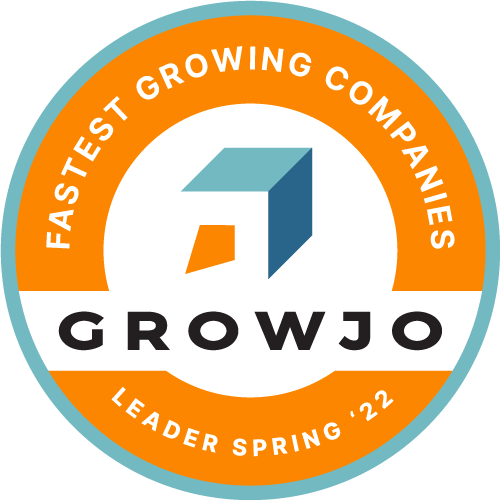How to Build an Effective Sales Pipeline in 6 Steps
Sales cycles differ from business to business, and can even get specific for every prospect or client. Monitoring all of these cycles is a must to figure out your company’s longevity and health, and the performance of every sales representative in your company. To help in organizing multiple sales processes, here’s a guide on how to build a sales pipeline.
What is A Sales Pipeline?
A sales pipeline represents all the ongoing deals that a company’s sales department is working on.
Often confused with a sales funnel, a sales pipeline is actually the system of how you organize all the individual sales cycles of your prospects.
Furthermore, sales funnels typically focus on the customer’s journey while a pipeline includes all the necessary actions representatives should take to convert a prospect into a purchasing customer.
The implementation of a sales pipeline can be tracked manually using a spreadsheet or with automation using a client relationship management platform.
How to Build a Sales Pipeline
With a sales pipeline, managers can easily aggregate the efficacy of their sales processes and gain insight into the performance of every salesperson on the team.
Here are the steps on how to build a sales pipeline.
1. Plot Your Sales Cycle
Laying out your sales cycle is fundamental in building your sales pipeline as it shows you which stages your reps and prospects go into during the conversion process. In this step, you need to be able to identify the buying stages your prospects go into.
This can be a fast 3-step cycle including acquisition, proposal, and decision, or a lengthy multi-step cycle from prospecting to closing.
2. Identify Critical Events
Your next step is to identify events in your sales cycle where opportunities for key actions arise. These actions are what your salespeople should be doing in response to such opportunities.
Grouping these actions can help you identify more specific stages in your sales pipeline, along with the tasks needed to move prospects along the sales process.
You may include additional phases or stages in your pipeline, but it’s essential to include the essential stages of prospecting, qualifying, proposal, and follow-up.
Prospecting usually entails reps calling hundreds of prospects to set a meeting. Qualifying includes determining a prospect's interest in your product. This is followed by a proposal based on the needs a rep was able to identify during the discovery session.
Finally, there’s the follow-up stage with the goal of having your prospect agree on a deal and finalize their purchase.
3. Determine Your Sales Process Length
After categorizing the phases of your sales pipeline, and using the data you already have from previous clients, measure the time it takes to close a deal and determine the signals that indicate a deal is stagnant.
How many days or weeks does it take to turn one prospect into a customer? When is a prospect considered a cold lead?
This becomes your primary basis of expectations when creating your pipeline and setting goals for your salespeople.
4. Estimate Your Pipeline’s Size
Now, according to your sales goals and the length of your sales process, you should be able to estimate your pipeline’s size.
Your pipeline’s size is based on a calculation of how many leads it should be able to accommodate to meet your sales goals.
This estimate helps in identifying how many salespeople should be working on your team, and how many prospects they should contact in a week to meet your short-term and long-term goals.
5. Secure a Management System
Your pipeline can be visualized with a spreadsheet including your prospect’s name, their expected dates of purchase, estimated purchase values, and their next scheduled appointments.
Implementing your pipeline using a CRM like Pipedrive, Hubspot, or Freshsales, on the other hand, can provide you with an intuitive view to easily monitor each deal or prospect’s progress.
Using a CRM can also provide you with automated reports on your team’s performance during certain periods of time, and also let you easily add or deduct steps in your process as you see fit.
It’s highly recommended that you use a CRM to implement your sales pipeline and in managing your sales team.
A CRM makes it a lot easier to organize all ongoing sales cycles, institutionalize accountability, maintain prospect information, crunch numbers and create reports, and set up automation for follow-ups with prospects.
6. Refine Your Design Along the Way
Your sales pipeline allows you to work in a highly organized manner even as your sales team hires more representatives.
Make the best use of your pipeline by using it to monitor the efficacy of every step implemented in your pipeline and the performance of your salespeople.
Especially when using a CRM, it becomes easier to track key metrics and see where improvements can be made in every facet of your sales process.
Use the data from these reports to continuously refine your sales process and pipeline into a powerful growth driver for your company.
Outsourcing Sales Tasks to Virtual Assistants
Increasing mastery of your sales pipeline can take some time, but you still need to keep prospects moving along and continuously converting.
Your business also continues to grow, as does the number of tasks you need to complete on a daily, weekly, or monthly basis.
To avoid work piling up, you can outsource any sales conversion tasks to a prospecting virtual assistant from Virtudesk.
Also known as virtual inside sales associates (ISA), these are experts you can rely on when it comes to prospecting, lead generation and qualification, and other highly important sales process tasks.
If you’d like to work with virtual assistants in building a robust sales pipeline, feel free to fill out this form and one of our Consultants will get in touch with you.
More Articles From MyVirtudesk:
Share this article
Meet our Most Trusted
Partners & Clients

Byron Lazine
Co-Founding Chief-of-Operations at BAM (Broke Agent Media)I’ve been using Virtual Assistants for years throughout all of my companies. Once we found Virtudesk the process got even easier and allowed us to scale out our hiring. Highly skilled and accountable professionals. 100% recommend!

Rebecca Julianna James
Realtor / Content CreatorBefore getting started with Virtudesk I had my doubts that they would find what I was looking for. I needed a very particular person to add to my team and let me tell you I am highly pleased! My virtual assistant Myril is the best! I am excited to grow my socialmedia accounts with her. Thank you Virtudesk!

Chelsea Erickson
Realtor La Belle RE GroupI am very happy with the assistance Virtudesk is providing for my real estate business. This is a newer position for my company and we are working through the creation and efficiency.

















